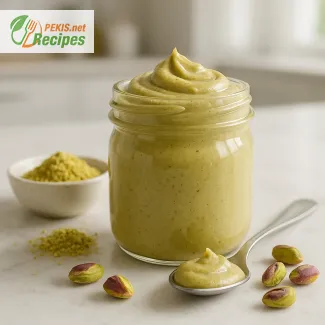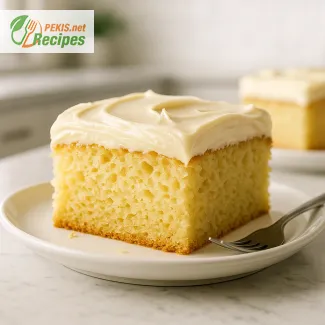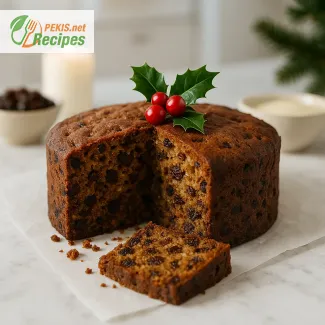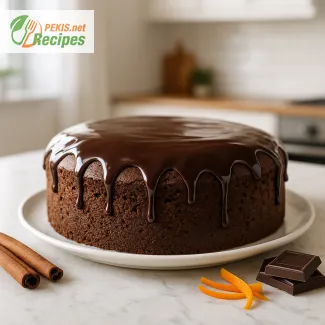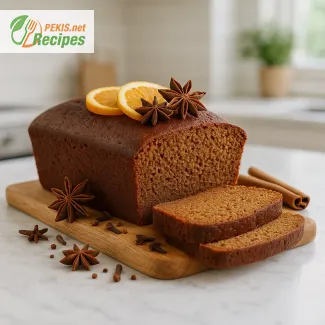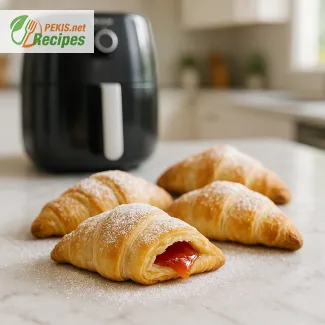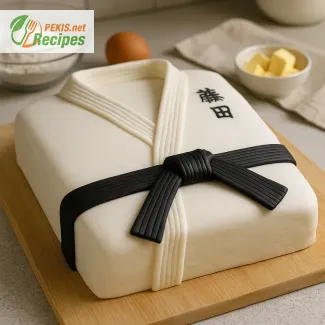
Mastering the Art of Judogi Cakes: A Themed Treat for Judo Enthusiasts
A playful baking project for martial arts birthdays and judo celebrations
Transform a simple cake into an edible masterpiece with this judogi cake, inspired by the iconic white uniform worn in judo. This themed dessert combines the craftsmanship of cake decorating with the elegance and discipline of martial arts, making it an unforgettable centerpiece for any judo lover’s birthday, tournament celebration, or dojo gathering.
The judogi cake is not just a novelty — it’s a canvas for creativity and culinary precision. From shaping the uniform to folding the fondant belt into a neat knot, every step of the process is a satisfying balance of structure and detail. Whether you're baking for a child who just earned their yellow belt or a sensei’s retirement celebration, this cake makes a memorable impression with both visual impact and flavor.
Judogi cake design and its rising popularity
In recent years, the demand for custom martial arts cakes has grown, with judo-themed cakes emerging as a standout favorite. Parents and cake decorators alike search for innovative ways to celebrate judo achievements through personalized baking projects. While traditional sports-themed cakes often revolve around balls or equipment, the judogi cake is distinct — it pays tribute to discipline, respect, and culture.
This edible uniform typically features a clean white fondant exterior, pleated folds mimicking the cotton gi, and a carefully sculpted belt representing the recipient’s rank. Depending on the level of detail, decorators can add dojo patches, embroidered names, or even miniature fondant medals. The overall result is a cake that doesn’t just look professional — it tells a story.
Perfect for birthdays, tournaments, and martial arts events
Whether you're hosting a birthday for a young judoka or organizing a dojo-wide belt ceremony, this cake is a perfect showstopper. It's versatile in size and structure — you can create a sheet cake sculpted into a torso, or build a layered cake topped with a fondant jacket and belt. The design lends itself well to personalization: adjust the belt color, add Japanese kanji, or incorporate your dojo's colors into the cake board for extra flair.
These cakes are often made using vanilla sponge, chocolate cake, or other sturdy bases like pound cake — ideal for sculpting. A firm buttercream or ganache layer provides the necessary stability under fondant, ensuring clean lines and a sharp final look.
Key decorating techniques for judo uniform cakes
Creating a realistic judo uniform cake requires more than a love of baking. It involves planning proportions, mastering fondant techniques, and having a good sense for visual balance. Here are some common steps and features seen in well-crafted designs:
- Shaping the base: Whether you start with a single sheet cake or multiple layers, the basic silhouette resembles a gi folded at the waist, sometimes including sleeves or a V-neck collar.
- Textured fondant: Use embossing tools or a gentle scoring method to recreate the woven texture of the judogi fabric.
- Fondant belt: The belt should sit snugly around the waist, tied in a neat knot with visible overlapping folds. The color signifies the level (white, yellow, green, blue, brown, black).
- Realistic details: Decorators often add small elements like dojo logos, name tags, belt stripes, or tournament badges using edible ink or fondant cutouts.
Cultural symbolism behind the judogi
The judogi is more than just a uniform — it’s a symbol of discipline, humility, and growth. Originating from Japan, it represents the values at the heart of judo: respect for the opponent, perseverance, and inner balance. Translating this into cake form means capturing more than aesthetics — it’s about honoring tradition in a playful, edible way.
Because of this significance, judogi cakes are especially cherished within martial arts communities. They become part of a ritual: a sweet reward after a tough competition, or a heartfelt gesture from student to teacher. The belt itself, tied across the middle of the cake, becomes a focal point — symbolizing progress and dedication.
Customizing your judogi cake for impact
Personal touches can elevate the standard design into something unforgettable. Here are ideas decorators often include to give their cakes a deeper connection to the recipient:
- Add the judoka’s name in Japanese characters on the cake or belt
- Incorporate gold accents or edible medals for tournament winners
- Choose fondant colors that match dojo branding or event themes
- Use rice paper or sugar sheets to print custom logos or flags
- Include figurines of judo moves or techniques as toppers
These details transform a basic judo-themed cake into a fully personalized experience — one that’s not just admired but remembered.
Essential tools for crafting your judogi cake
To create clean lines and elegant folds, the right tools make all the difference. Common equipment used in making a judogi cake includes:
- Sharp knives or fondant cutters for clean edges
- Fondant smoothers to avoid lumps or bulges
- Embossing mats or texture rollers for uniform weave effects
- Edible ink pens for writing names or kanji
- Modeling tools for sculpting the knot and belt folds
These tools help bring your vision to life with greater control, especially when working on details like stitching or folds.
Choosing flavors and fillings that pair with the theme
While vanilla and chocolate are popular choices, many decorators choose flavors that match the occasion or recipient's preferences. Common flavor combinations for judogi cakes include:
- Matcha sponge with white chocolate filling – nod to Japanese heritage
- Chocolate cake with cherry compote – adds depth and richness
- Lemon sponge with raspberry buttercream – bright and fresh contrast to the white gi exterior
The goal is to strike a balance between structural integrity and delicious flavor. The design may be traditional, but the inside can be as adventurous as you like.
Judogi cake: where creativity meets celebration
Creating a judogi cake is more than a baking project — it's a celebration of passion, progress, and personal connection. Whether you’re a hobbyist baker or a seasoned decorator, this cake offers a meaningful way to engage with martial arts culture while honing your cake design skills. From belt to sleeves, every detail can be shaped to reflect the individual behind the gi.
1. Prepare the sponge cake
Preheat the oven to 175 °C (350 °F). Grease and line two rectangular cake pans (approximately 33 cm x 23 cm / 13 in x 9 in).
In a large mixing bowl, cream together the softened butter and sugar until pale and fluffy. Beat in the eggs one at a time. In a separate bowl, whisk together the flour, baking powder, baking soda, and salt.
Add the dry ingredients to the wet mixture in three parts, alternating with the milk. Stir in the vanilla extract last.
Divide the batter evenly between the two pans and smooth the surface. Bake for 35–40 minutes, or until a toothpick inserted into the center comes out clean. Allow cakes to cool in the pans for 10 minutes before turning them out onto a wire rack to cool completely.
2. Make the buttercream
In a large bowl, whip the softened butter until fluffy. Gradually add powdered sugar and beat until smooth. Add vanilla extract, salt, and heavy cream. Whip for an additional 2 minutes until light and spreadable. Set aside at room temperature.
3. Assemble and carve the cake
Once the cakes have cooled, level the tops if necessary. Stack the two layers with a thick layer of buttercream in between. Refrigerate for 30 minutes.
Using a serrated knife, carve the cake into the shape of a folded judo gi (judogi). Cut a slight V-neck shape at the top center. Optionally, create fondant sleeves to attach later.
Apply a thin crumb coat of buttercream all over the cake. Chill for 15–20 minutes.
4. Decorate with fondant
Roll out white fondant to approx. 3–5 mm (⅛–¼ in) thickness on a cornstarch-dusted surface. Cover the cake completely, smoothing out the edges and pleating to resemble a real gi. Trim the excess.
Create a black belt using the black fondant. Roll a long strip and fold into a knot across the lower part of the cake. Add extra details like folds, stitching, and embroidered name (using edible marker).
Attach any additional decorations such as dojo badges or belt stripes. Use a small brush and water to adhere fondant pieces securely.
Creative Enhancements for a Judogi-Themed Celebration Cake
Make your judo uniform cake more flavorful, healthier, and visually striking
Crafting a judogi cake is already a rewarding experience, but with a few thoughtful adjustments, you can elevate the final result to be even more delicious, nutritious, and visually refined. Whether you're planning a memorable birthday surprise or a dojo graduation party, these tips help you go beyond the basic recipe and customize your cake to fit any dietary preference or aesthetic goal.
Improve flavor through ingredient upgrades
Flavor is the soul of any cake, and a visually stunning design deserves a taste to match. While the traditional vanilla sponge is reliable and neutral, consider these enhancements to enrich the taste profile:
- Add almond or coconut extract in small amounts (2–3 ml / ½ tsp) for a more nuanced, layered flavor.
- Use browned butter instead of regular unsalted butter to introduce a nutty depth and aroma.
- Include citrus zest (lemon or orange) in the batter for a bright, fresh contrast to the sweetness of the fondant.
- Infuse the milk used in the recipe with spices like cardamom or a split vanilla bean for subtle aromatic complexity.
Each of these ingredients complements the soft sweetness of buttercream and the mildness of fondant without overpowering the overall balance.
Switch to healthier ingredients without sacrificing structure
For those aiming to make the cake slightly more wholesome without compromising on texture or stability, consider the following ingredient substitutions:
- Replace 100–150 g (¾–1 cup) of all-purpose flour with whole wheat pastry flour to increase fiber content.
- Use Greek yogurt or unsweetened applesauce to substitute half the butter in the sponge. This reduces saturated fat while keeping the cake moist.
- Choose reduced-sugar buttercream by lowering powdered sugar and enhancing flavor with vanilla paste or natural fruit powders.
- Swap traditional fondant with marzipan or naturally colored modeling chocolate for a more wholesome, less processed finish.
These minor adjustments support better nutrient density and make the cake suitable for guests with health-conscious preferences.
Common mistakes and how to avoid them
Decorating a detailed cake like this requires precision. To avoid common issues, pay attention to these areas:
- Improper carving: Always chill your cake layers before cutting. Carving soft cake at room temperature leads to crumbling and uneven edges.
- Fondant tearing: Roll fondant to an even thickness (3–5 mm / ⅛–¼ in). Too thin and it rips; too thick and it becomes heavy and sticky.
- Over-whipping buttercream: Overmixing can cause air pockets that interfere with fondant application. Mix until smooth, not fluffy.
- Sweating fondant: Humidity causes condensation. Avoid refrigeration after fondant application unless necessary; if refrigerated, let the cake come to room temp gradually.
- Misproportioned gi folds: Use light scoring tools or fondant rulers to create even pleats that mimic a gi jacket.
A little patience and practice in these areas go a long way in achieving a polished final product.
Add character with natural flavors and colors
The traditional black and white color palette of a judo gi is elegant, but decorators looking to personalize the cake can explore natural coloring and flavoring options:
- Use beetroot powder or black sesame paste to achieve bold, natural black coloring for the belt.
- Opt for matcha powder in the sponge or buttercream for subtle green tones and earthy depth.
- Create fruit-based fillings (such as raspberry, passionfruit, or mango) between layers for added color contrast and acidity to balance the sweetness.
- Add edible gold or silver dust to decorate medals, belt stripes, or badges to signify awards or ranks.
These additions maintain an artistic theme while offering more sophistication in flavor and presentation.
Why homemade always wins
Choosing to bake a judogi cake at home offers more than just cost savings — it provides full control over ingredients, allergens, quality, and emotional value. A store-bought cake might replicate the shape, but not the personal story behind each detail — from belt color to the recipient’s name in kanji.
Homemade cakes also allow for adaptation to dietary needs (gluten-free, lactose-free, vegan) and give bakers the chance to use real ingredients instead of stabilizers and preservatives. The act of crafting the cake — shaping, folding, knotting the belt — makes the gift infinitely more meaningful.
Creative layout variations for the judogi cake
While the folded gi design is most common, decorators can explore other formats:
- Standing uniform cake: Sculpt a torso and arms, then apply the gi jacket vertically — great for elaborate displays.
- Mini gi cupcakes: Make individual mini cakes or cupcakes topped with fondant belts or judo badges for party favors.
- Bento cake style: A small 10 cm (4 in) layered cake boxed in minimalist style with a fondant belt on top — modern, trendy, and ideal for small gatherings.
Exploring these formats allows you to tailor the cake’s scale, complexity, and budget to your event.
Adding meaning with cultural details
Incorporating the values and symbols of judo gives your cake emotional resonance:
- Include belt progressions (e.g., yellow to brown stripes) if celebrating a promotion.
- Write Japanese kanji for "courage", "respect", or "discipline" on the gi flap or belt ends using edible pens.
- Add a dojo patch or flag if the cake is made for a tournament or training anniversary.
These small touches not only personalize the cake but also deepen the recipient’s emotional connection to their journey in martial arts.
This cake isn't just a dessert — it's a reflection of character, dedication, and celebration. Enhancing the traditional judogi cake with well-planned ingredients, clever substitutions, and personalized design ensures it will be remembered not just for how it looked, but how it tasted, how it made someone feel, and what it represented.
Allergens present in the recipe
- Gluten (from wheat flour)
- Eggs
- Dairy (butter, milk, cream)
Substitution tips for allergens
- Replace all-purpose flour with gluten-free flour blend (1:1 ratio).
- Use plant-based milk (e.g. almond, oat) and vegan butter for dairy-free versions.
- Substitute eggs with applesauce (60 ml / ¼ cup per egg) or flaxseed meal (1 tbsp + 3 tbsp water per egg) for an egg-free option.
Vitamins and minerals per serving (approximate)
- Calcium: 80 mg – supports bone health and muscle contraction
- Iron: 1.2 mg – contributes to oxygen transport and energy production
- Vitamin A: 220 µg – essential for vision and immune function
- Vitamin D: 0.6 µg – helps regulate calcium absorption
- Vitamin B12: 0.5 µg – supports nervous system function
- Magnesium: 18 mg – aids in nerve transmission and energy metabolism
Antioxidants per serving (approximate)
- Vitamin E: 1.4 mg – protects cells from oxidative stress
- Beta-carotene: 160 µg – supports skin and eye health
- Selenium: 7 µg – contributes to immune defense and thyroid function
